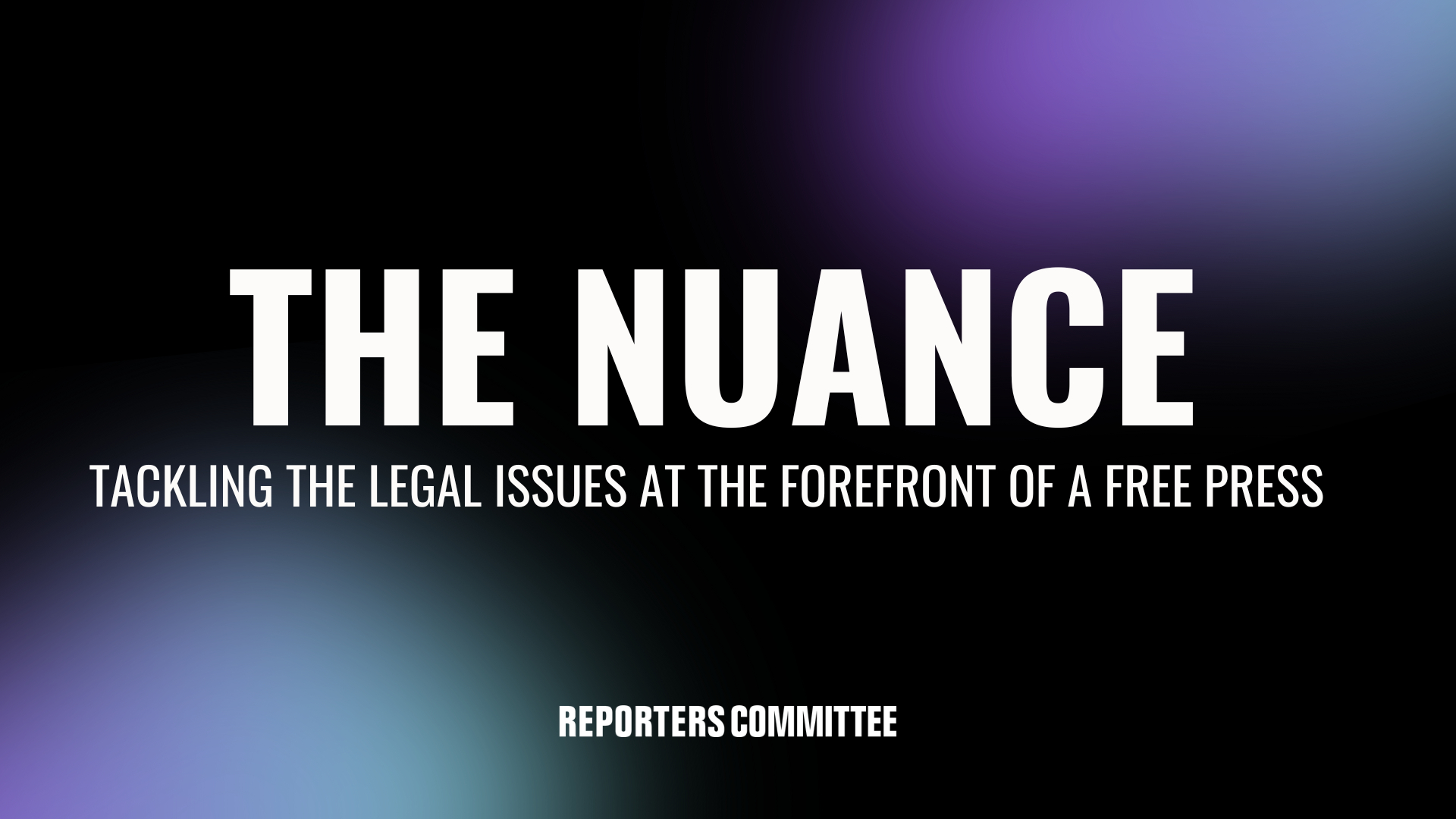Arizona bill targeting ‘swatting’ could raise First Amendment concerns

If you like this post, sign up to get The Nuance newsletter delivered straight to your inbox every Sunday night!
“Swatting” — falsely reporting a crime to draw an aggressive police response — is an extraordinarily harmful and potentially lethal prank that should be very illegal.
It has also become a popular tactic to harass public officials. In early January, police were called to respond to a reported shooting at the home of Tanya Chutkan, a federal district court judge in Washington, D.C., presiding over one of the federal criminal cases against former President Donald Trump. The prosecutor in the same case against Trump, Jack Smith, also fell victim to a swatting attempt: Police in Maryland raced to Smith’s home on Christmas Day in response to a false report that he had shot his wife. Rusty Bowers, the former speaker of the Arizona House of Representatives, was targeted by swatting in recent weeks, too. An anonymous caller falsely reported a murder inside Bowers’s house and said there was a pipe bomb inside.
In the department of “bad facts make bad law,” the Arizona Legislature is currently considering a bill aimed at targeting swatting, but that could sweep further and raise concerns for public interest news reporting and free speech more broadly. H.B. 2508 would criminalize “initiating or circulating a report of bombing, fire, offense or other emergency knowing that such report is false and intending … that it will cause public alarm or an emergency response.”
The bill does not, however, define the term “public alarm” and it is not otherwise defined in Arizona law. This may be a problem, since when left open to interpretation, “caus[ing]” public alarm could cover a wide range of activities, including those of journalists. As currently drafted, the bill could be read to apply to a journalist who “circulate[s]” a false report about an emergency, knowing it to be false but adding context or an explanation to it. Or, it could be interpreted to apply to journalists or others writing satirical or parodic social media posts or news articles about phony emergencies that someone may inadvertently take seriously. (Granted, the statute does require “intent” to cause public alarm, but an aggressive prosecutor could still make the case that the act itself implies the requisite intent.)
This concern is not hypothetical. In the early days of the COVID-19 pandemic, a Louisiana man published a post on Facebook comparing the COVID-19 pandemic to a zombie apocalypse movie and saying that law enforcement officers would shoot infected people “on sight.” In an apparent reference to the actor that played the conquering hero in zombie movie “World War Z,” the man ended the post with “#weneedyoubradpitt.” Despite his repeated attempts to explain that this was a joke, the local sheriff’s office arrested the man for “terrorizing” and put him in jail. Though the charges against him were eventually dropped, the man filed a lawsuit against the sheriff’s office, alleging that his First and Fourth Amendment rights had been violated. In a recent decision, the U.S. Court of Appeals for the Fifth Circuit held that the man’s post was entitled to First Amendment protection and there had been no probable cause to support his arrest.
Similar issues have arisen with respect to the scope of the Federal Communications Commission’s broadcast “hoax” rule, which permits the FCC to punish licensees who deliberately broadcast false reports. It was implemented in the early 1990s after a few incidents of dumb pranks by shock jocks and the like. Not all were frivolous, though. One, KSHE radio’s report of a nuclear attack on the U.S. was a bona fide political statement by a DJ in response to callers urging the U.S. to drop an atomic bomb in the first Iraq war. The FCC has, however, interpreted the hoax rule narrowly and requires that the broadcast actually cause manifest harm in the world before bringing an enforcement action.
Fortunately, there’s an easy fix for the Arizona bill: lose the terms “circulating” and “public alarm.” That would narrow the bill to its intended purpose — actual swatting — and limit unintended consequences, like giving the state the authority to go after a modern “War of the Worlds”-type broadcast. If only all things were that simple.
The Technology and Press Freedom Project at the Reporters Committee for Freedom of the Press uses integrated advocacy — combining the law, policy analysis, and public education — to defend and promote press rights on issues at the intersection of technology and press freedom, such as reporter-source confidentiality protections, electronic surveillance law and policy, and content regulation online and in other media. TPFP is directed by Reporters Committee attorney Gabe Rottman. He works with RCFP Staff Attorney Grayson Clary and Technology and Press Freedom Project Fellow Emily Hockett.